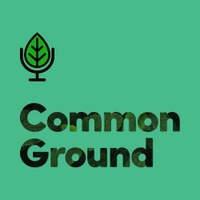
Complementary medicine (CM) refers to a diverse collection of clinical practices (such as acupuncture, massage therapy and naturopathy) and treatments (such as herbal medicine and homeopathy) not traditionally associated with the conventional medical curriculum (1).
CM encompasses a diverse range of therapies and health products that aim to prevent, treat or manage illness. Some CM therapies offer a complete system of diagnosis and treatment, while others complement conventional medical practices with supportive therapy (2).
CM may also be commonly referred to as “Complementary and Alternative Medicine” (CAM).
A comprehensive literature review examining the nature of CM use in Australia found CM users are more likely to seek CM services for a range of chronic conditions including diseases identified as National Health Priority Areas by the Australian Government (3).
The eight priority areas are: arthritis and musculoskeletal conditions, asthma, cancer control, cardiovascular health, diabetes mellitus, injury prevention and control, mental health and obesity.
These conditions are associated with up to 90% of deaths each year in Australia (4).
Core philosophies of CM therapies
Complementary medicine practitioners have a multifactorial and multilevel view of human illness.
Some core philosophies include:
- an expanded individual-centred and holistic approach to health care
- emphasis on the body’s capacity for self-repair, given appropriate conditions (5)
- addressing the underlying cause or causes of ill health
- treating the whole person, not just the disease or the symptoms
- utilising non-invasive approaches - herbal medicines, nutrients, massage therapy
- seeking to optimise health
- seeking to understand disease by empirical intuitive symptomatology and evidence-based medicine (6)
- working with a network of Allied health professionals
 and the medical profession
and the medical profession
Professional Associations
There are numerous Professional Associations CM Therapists may be registered/accredited with.
These include
Such associations require minimum education standards, have established codes of conduct, complaints procedures, require their members to be fully insured and have ongoing educational programs.
Some statistics on CM
- A 2008 survey conducted by NPS MedicineWise revealed that 65 per cent of Australians had used one or more complementary medicines in the previous 12 months (7)
- It is estimated that two in three Australians use CM each year and 42 per cent do so to prevent or manage chronic conditions identified as national health priorities. This is one of the highest consumption rates per capita in developed nations (8)
- The estimated number of visits to CM practitioners by adult Australians in a 12-month period (69.2 million) was almost identical to the estimated number of visits to medical practitioners (69.3 million) (9)
- A survey performed in 2010 indicates that up to 65% of Australian cancer patients use at least one form of CAM (10) with over half of these patients using CAM in conjunction with conventional therapy (11)
The Australian Medical Association’s position statement on CM recognises that evidence-based aspects of CM are part of patient care and may have a role in conventional medical practice (12).






